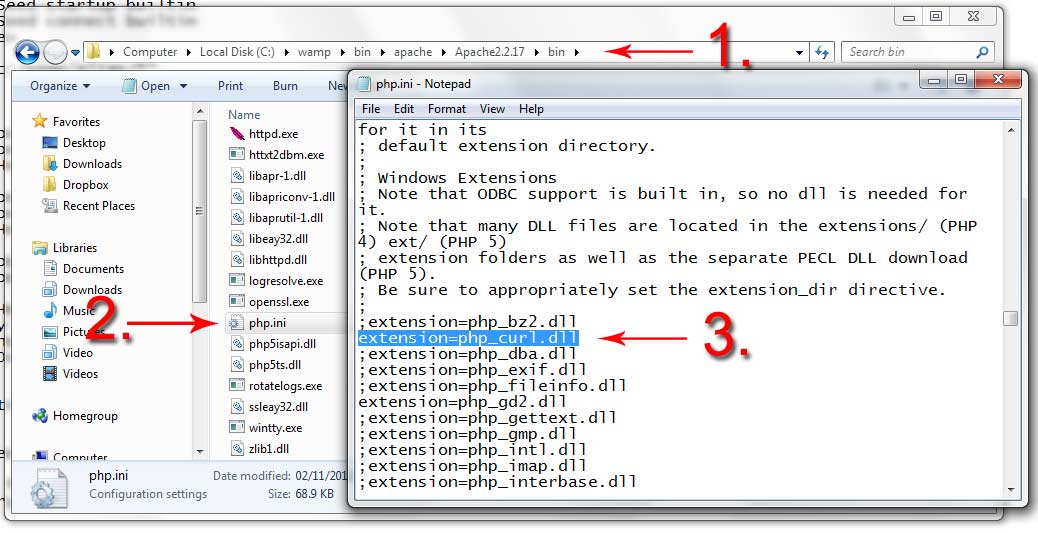

Now that Apache is up to snuff, it’s time to add missing PHP extensions and configurations.

Make sure you back this up before you start fiddling around. If Apache is still having errors then chances are you need another missing module or you screwed up your nf file. If you have expires rules in your htaccess file then include the expires_module. Without deflate enabling gzip compression will cause a configuration error. Without the rewrite module your clean URLs won’t load. You will want to enable deflate_module and rewrite_module. Left Click on WAMP Server systray and browse to Apache -> Apache Modules. You can either update your localhost IP or just use “Allow from all”.īy default Apache has a few modules disabled that should be enabled. By default it may “Order Deny,Allow”, then specify a specific IP that has access. I modified my rules to look like this:Īnother snag might be the fact you can’t access the server at all. Most of you will have your DocumentRoot as \One of the snags you may encounter at this point might be getting Apache to recognize. If you have any subdomains then this is the time to set those up and it looks something like this:Īs you can see, I have two separate projects FantasySP and Top IAmA, one running on localhost and the other on rlocalhost. I am not going to go through the entire process, but will add some useful code snippets. To get to the Apache configuration file Left Click on WAMP Server systray and browse to Apache -> nf. To do that go to: “Turn Windows Feature On and Off” and disable IIS, otherwise it will take up Port 80 and waste resources.Īfter a few reboots you should be at the point where you can configure PHP/Apache and add additional extensions. It is also extremely important to make sure IIS is not running on your computer. Since you are using Windows 7/8 it is important that you install the latest runtimes for your setup:

Installing WAMP at the start is easy and I am going to assume you can handle clicking next on the install screen and get the basics working. In my particular case, I opted to run 64bit code but I do not see any benefits other than making things more difficult. What we are trying to tackle here are more advanced problems that you may experience.Ī couple of snags I hit were WAMP running slowly, APC refusing to install, and getting cURL working.Īt the time of writing this, the current bleeding edge WAMP Bundle has the following specs:Īpache 2.4.2 – Mysql 5.5.24 – PHP 5.4.3 XDebug 2.1.2 XDC 1.5 PhpMyadmin 3.4.10.1 SQLBuddy 1.3.3 webGrind 1.0 Look elsewhere if you can’t get the basics working. Keep in mind this is not a newbies guide to WAMP. This post is going to walk you through some of the tougher steps to get your local machine up and running so you can get back to development. Setting up WAMP Server can be tricky depending on your configuration.


 0 kommentar(er)
0 kommentar(er)
